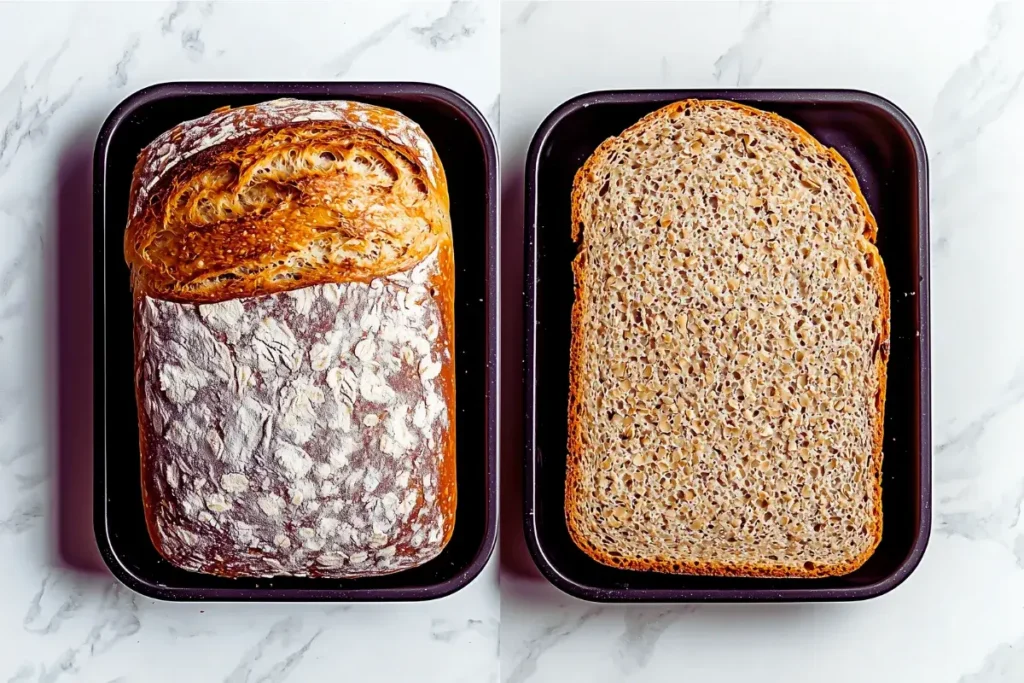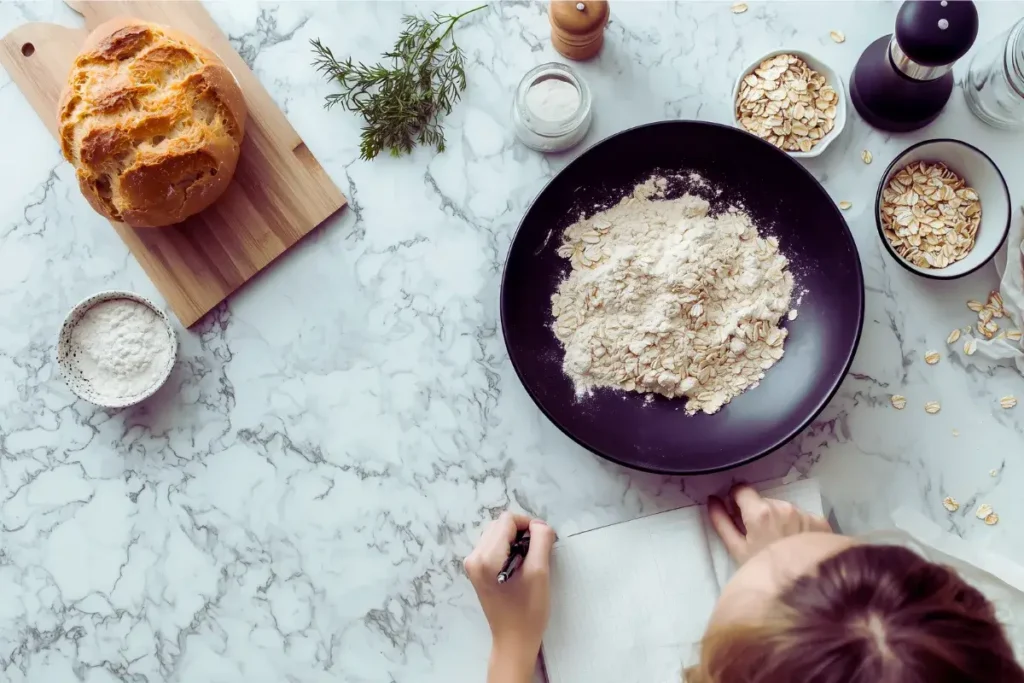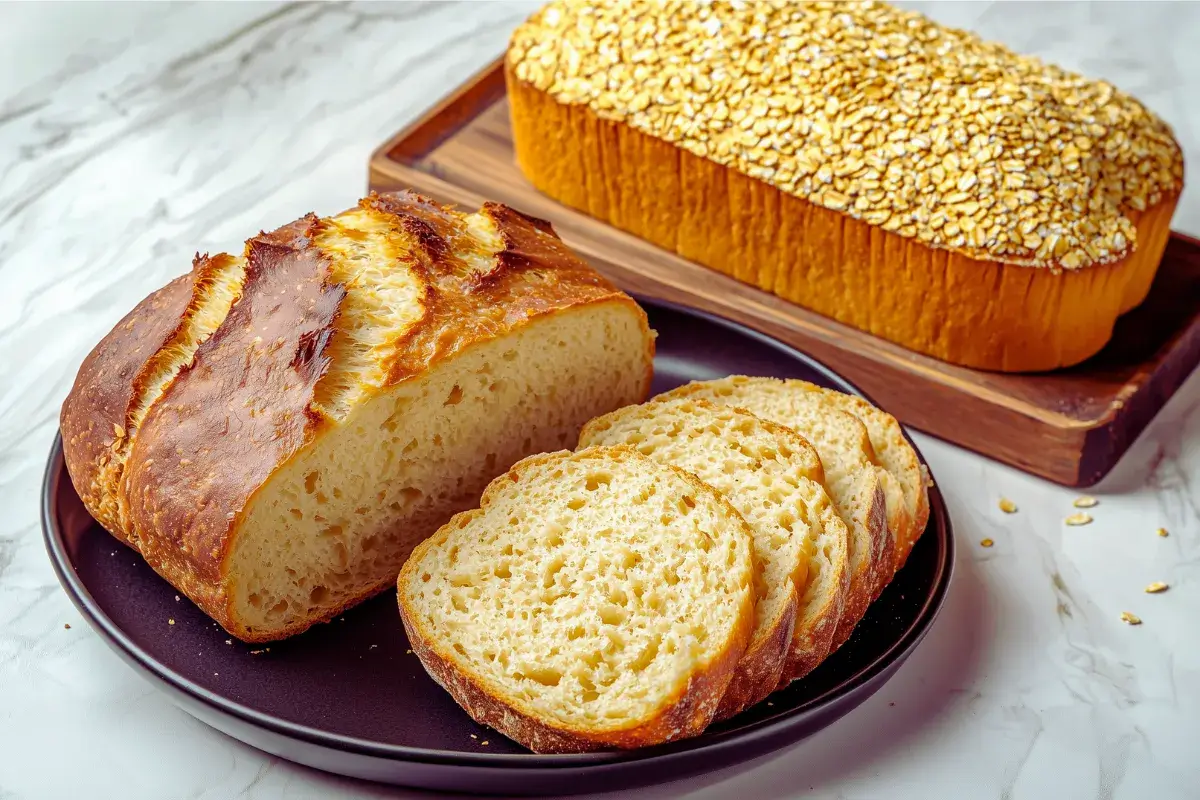Why Are Oats Unsuitable for Bread Making?
Bread lovers and home bakers alike often wonder: Why are oats unsuitable for bread making? After all, oats are packed with nutrients, fiber, and a mild, earthy flavor that’s downright comforting. So, what’s the catch?
In this article, we’ll explore the science behind why oats don’t behave like wheat in bread recipes. We’ll unpack everything you need to know about why are oats unsuitable for bread making?—from gluten issues to texture troubles and baking hacks. Plus, we’ll bust myths, share real baking tips, and answer some hot questions from Google’s People Also Ask section. Whether you’re a curious beginner or a seasoned baker, this guide’s got you covered.
So the next time you’re wondering why are oats unsuitable for bread making?, remember—it all comes down to the missing gluten and its impact on structure.
Understanding the Role of Gluten in Bread Making
What is Gluten and Why It’s Essential for Bread Structure
To get to the heart of why oats are unsuitable for bread making, we’ve gotta talk gluten. Gluten is a stretchy protein found in wheat, barley, and rye. When flour meets water, gluten proteins link together to form a web—think of it like a balloon that traps gas from yeast. This is what gives bread its rise, chewiness, and airy structure.
Without gluten, dough behaves more like a sticky paste than something elastic. Oats, on their own, just don’t have enough of this magic ingredient. That’s why using only oat flour leads to a dense, crumbly loaf that doesn’t rise much at all.
How Gluten Provides Elasticity and Rise in Bread
Here’s the fun part: when you knead wheat flour dough, you’re developing the gluten strands. The more you knead, the stretchier it gets. This elasticity traps the bubbles from yeast fermentation, making the dough puff up in the oven.
In contrast, oat dough lacks that gluten structure. So, no matter how long you knead, you won’t get the same bounce or rise. The result? A flat, dense, and often dry loaf—not exactly the fluffy bread we’re used to.
Comparison: Gluten Content in Wheat vs. Oats
Let’s break it down:
- Wheat flour contains about 8–14% gluten, depending on the type.
- Oats? Zilch. Nada. They’re naturally gluten-free unless cross-contaminated.
Sure, oats have protein, but it’s not the right kind to mimic gluten’s elastic powers. That’s why bakers often mix oat flour with wheat or add binders like xanthan gum to help imitate that structure.
So, when asking why are oats unsuitable for bread making, the gluten gap is the biggest reason.
Why Are Oats Unsuitable for Bread Making?
The Missing Gluten Network in Oats
The main reason why oats are unsuitable for bread making lies in one simple fact: they lack gluten. Gluten is the building block that gives traditional bread its structure, chew, and airy crumb. Oats, although packed with fiber and protein, don’t contain this essential element. So, what happens when you try to bake a loaf with only oat flour? You end up with something dense, flat, and far from fluffy.
Even if you add yeast, oat dough doesn’t develop the web-like structure needed to trap gas and rise properly. This is why oat flour is often used in cookies, muffins, or bars—but not in classic sandwich bread.

For a deeper dive into this, check out this related article on how many calories are in oatmeal molasses bread.
Impact on Dough Formation and Bread Texture
Oats absorb more moisture than wheat, which makes the dough sticky and heavy. Without gluten, there’s no stretch or spring. Instead, you get a batter-like consistency that’s hard to knead and shape. This makes forming loaves or buns quite the challenge. Even when baked, oat-based dough tends to fall apart or become crumbly.
Moreover, the bread often tastes grainy and lacks that signature bounce we expect from wheat-based loaves. You might be tempted to toss in more flour to fix the texture—but without gluten, it’s like trying to build a house without bricks.
So, to answer the key question again—why are oats unsuitable for bread making?—it’s because they simply don’t have the structural protein needed to hold bread together.
Can You Use Oats to Make Bread?
Types of Oat Bread and How They Differ
Now, just because oats can’t make bread on their own doesn’t mean they’re totally useless in baking. Quite the opposite! When used alongside wheat flour, oats can enhance your bread with added fiber, flavor, and nutrition.
For instance, oat molasses bread combines the mild, nutty flavor of oats with the binding strength of wheat flour and the sweetness of molasses. It’s soft, hearty, and perfect for breakfast or snacking. Want to try a classic? Take a peek at this oat molasses bread recipe from Maine for inspiration.
Using Oats as a Supplement Rather Than a Base
When asking can you use oats to make bread, the answer is yes—with conditions. Oats work best when they support the structure, not when they are the structure.
Here’s how you can use oats in your baking:
- Mix rolled oats into your dough for texture
- Add oat flour as a partial substitute (25–30%) for wheat flour
- Use oats to top your loaves for a rustic finish
But relying on oats alone? That’s a recipe for a flat, dense brick.
Also, for those focused on health, it’s worth checking out Will Oat Flour Rise with Yeast? to learn tips for perfect gluten-free baking and better understand how oat-based doughs behave.
So, while the core issue remains—why are oats unsuitable for bread making—with the right approach, oats can still play a delicious supporting role.
What Happens When You Substitute Oats for Flour?
Can You Substitute Oats for Flour in Bread Recipes?
At some point, every home baker asks: Can I just swap oats for wheat flour? It’s tempting—especially if you’re trying to make your bread healthier or gluten-free. But here’s the short answer: not entirely.
Substituting oat flour for all-purpose flour changes everything—texture, rise, and even the flavor. Oats don’t contain gluten, so they can’t form that stretchy, elastic network needed for a light, chewy loaf. If you try to substitute 100% of your flour with oat flour, expect a dense, moist loaf that won’t rise properly.

This goes back to our main point—why are oats unsuitable for bread making?—because they just can’t create the structure needed for traditional yeast breads.
Texture and Structural Changes When Using Oat Flour
Using oat flour can lead to several unexpected results. First, the dough will feel wetter because oats absorb more liquid than wheat. This can throw off your ratios, making your loaf heavy and sticky.
Second, since there’s no gluten to trap gas from the yeast, your bread won’t puff up in the oven. You might end up with a cake-like texture—more like a breakfast loaf than sandwich bread.
Want a tip? If you do want to add oat flour, start with just 25–30% and mix it with bread flour. That way, you keep some of the structure while still enjoying the nutty flavor and fiber boost oats offer.
For more delicious recipes, check out another great baking idea from Goodies Recipe to find something that complements your oat experiments in the kitchen.
Alternatives to Gluten in Bread Making
Gluten-Free Binders: Xanthan Gum, Psyllium Husk, and More
Still eager to use oats in baking? Then you’ll need some gluten substitutes to help create structure. That’s where binders like xanthan gum, guar gum, and psyllium husk come in. These ingredients help mimic the stretchy, elastic feel of gluten, making oat-based breads much more stable.
When you add these binders to a gluten-free mix, they help trap moisture and hold the dough together. This is essential if you’re baking a loaf with a high oat flour content.
These binders are often necessary when experimenting with oat flour because they address the core issue of why are oats unsuitable for bread making?
But here’s the kicker—these substitutes work best in small doses. Too much xanthan gum, for example, can make bread gummy and weirdly chewy. It’s all about balance.
Making Oat-Based Bread Work with Added Binders
If you’re determined to bake with oats, here’s your best bet: mix oat flour with other gluten-free flours like rice flour or sorghum flour, then add a binder. Also, use a loaf pan to support the shape since gluten-free dough doesn’t hold itself up well.
This approach won’t produce a traditional crusty loaf, but it can give you something hearty and satisfying. And remember, even though oats can’t do it alone, they shine when part of a team.
So, while we’ve explored why are oats unsuitable for bread making, it’s clear they’re not completely off the table—they just need a little help from science and the right ingredients.
The Science of Oats in Baking
Oat Composition: Fiber, Protein, and Starch
To understand why oats are unsuitable for bread making, it helps to peek under the hood—into the science. Oats are full of soluble fiber (mainly beta-glucan), complex carbs, and some protein. Sounds good, right? Well, yes and no.
While these nutrients make oats a superfood for your heart and digestion, they also create problems in baking. The soluble fiber in oats absorbs a lot of water. That’s great for oatmeal—but not so much for bread. This extra moisture leads to soggy dough that doesn’t firm up properly in the oven.
Plus, the protein in oats is avenin, which isn’t elastic like gluten. So even though oats have protein, it doesn’t do the heavy lifting in bread structure.
Why Oat Chemistry Affects Bread Leavening
When yeast ferments in bread dough, it creates carbon dioxide bubbles. In wheat dough, gluten traps those bubbles, allowing the bread to rise. But in oat-based dough, there’s nothing to trap the gas. The result? A loaf that stays low and heavy.
In fact, without gluten, the yeast’s hard work goes to waste. That’s a huge reason why oats are unsuitable for bread making—their chemistry just doesn’t support fermentation the way wheat does.
When experimenting with oat-based dough, understanding why are oats unsuitable for bread making? can prevent soggy or underwhelming results.

Frequently Asked Questions (FAQs)
Why can oats not be used in baking bread?
This is the million-dollar question—and we’ve answered it from every angle. Oats don’t contain gluten, the protein responsible for giving bread its chewy texture and rise. When you use only oats, you end up with a loaf that’s dense, crumbly, and doesn’t hold its shape. That’s why oats are unsuitable for bread making in most traditional recipes.
Can you use oats to make bread?
Yes, you absolutely can—but not by themselves. Oats are best used as an addition to wheat-based doughs. For example, adding rolled oats for texture or oat flour as a partial substitute gives your bread a rustic, hearty vibe. Just don’t expect oats alone to create that perfect rise.
Can I substitute oats for flour in bread?
You can—but only partially. Replacing all-purpose flour with 100% oat flour rarely ends well. The texture becomes heavy, the rise is poor, and the dough doesn’t behave the same. For better results, replace up to 30% of the wheat flour with oat flour and add a binder like xanthan gum to improve structure.
What happens if you use oat flour instead of all-purpose flour?
Expect big changes. Your dough will be wetter, harder to shape, and much less elastic. The finished bread will be more like a moist quick bread or dense loaf. It won’t have the springy crumb or light texture of traditional bread. That’s one more reason why oats are unsuitable for bread making when used alone. Knowing why are oats unsuitable for bread making? can save you from wasting ingredients and help you choose the right flour alternatives.
Final Thoughts – Embracing Oats in the Kitchen
Creative Ways to Incorporate Oats in Baking
Even though we’ve explored why are oats unsuitable for bread making, it’s clear they still have a place in the kitchen. Oats shine in muffins, pancakes, cookies, and even quick breads. You can sprinkle rolled oats on top of loaves for a rustic touch, or mix oat flour with wheat flour to boost fiber and nutrition without sacrificing texture.
Oats may not carry the loaf on their own, but they’re a powerful support player in the world of baking.
Recognizing Their Strengths and Limitations
To wrap things up, oats are a nutritional powerhouse but not a structural one. They lack gluten, absorb lots of moisture, and simply can’t provide the framework needed for yeast bread.
Still, don’t give up on them! Just pair oats with the right ingredients—and realistic expectations—and you’ll enjoy all their benefits without the baking frustrations.
At the end of the day, understanding Why are oats unsuitable for bread making? helps bakers make better choices—and better loaves.
👉 Want to try a delicious oat-based bread recipe that works? Check out this Oatmeal Raisin Molasses Bread on AllRecipes — it’s a perfect example of how oats can shine when paired with the right ingredients.


1 thought on “Why Are Oats Unsuitable for Bread Making? Shocking Facts + 5 Tips”